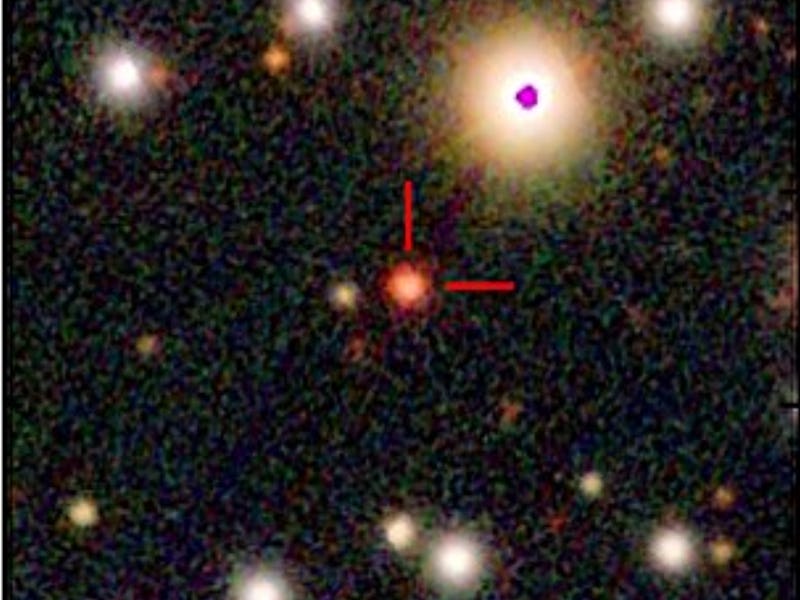Astronomers Discover Tiny Stars in a Terrifyingly Close Orbit
One of them is barely a star at all, and together the pair could fit inside the girth of our Sun.

If you needed any more proof that space is extremely weird, look no further than 457 light-years away. There, two tiny, dim stars whirling around each other every two hours, close enough together to fit inside our Sun.
A team of astronomers led by Harvard University’s Kareem El-Badry recently discovered the bizarre binary system. One appears to be a type of small, relatively cool star called a red dwarf, while the other is an even smaller object called a brown dwarf: sort of a faintly-glowing gray area between stars and planets — too big to be a gas giant, but too small to be a proper star. And they’re locked in a shockingly close orbital dance.
El-Badry and his colleagues have published their findings in a preprint paper, which has not yet been peer-reviewed or accepted by a journal.
The star marked at the center of this image is actually two stars in a scandalously close orbit.
Dynamic Duo
El-Badry and his colleagues were looking for nearby pairs of small stars in data from the Zwicky Transient Facility, and they found exactly what they were looking for — a pair of faint objects that pass in front of and behind each other as they orbit their shared center. By watching the pair of stars with several telescopes, in both optical and infrared light, the astronomers were able to measure the stars’ mass, radius, surface temperatures, and how quickly they orbited each other.
One member of the cosmic duo is a red dwarf, a small star with just 13 percent of our Sun’s mass and 18 percent of its radius. It’s tiny and dim, but it’s still bigger and brighter than its partner: a brown dwarf about the size of Jupiter but with 80 times the gas giant’s mass packed into that space. That’s minuscule for a star but huge for a brown dwarf. In fact, it's teetering on the edge of stardom. But so far, its mass isn’t enough to create the heat and pressure needed to kickstart hydrogen fusion.
Because brown dwarfs are so faint and so small, they’re often difficult for astronomers to find and study; El-Badry and his colleagues hope that watching this one transit in front of its orbital dance partner may help astronomers shed light on this weird class of objects.
Based on El-Badry and his colleagues' measurements, the pair have been orbiting each other for a long time: at least five billion years, and maybe as long as ten billion. During that time, they closed the original distance between them, which was at least five times the radius of our Sun. And they’re still spiraling ever closer. El-Badry and his colleagues predict that the pair will keep spiraling closer until, eventually, the brown dwarf starts pulling away material from its larger but less dense partner.
“Today, the entire binary would comfortably fit inside the Sun,” write El-Badry and his colleagues in their recent paper (although it’s unclear exactly who is supposed to be comfortable in that scenario).
This article was originally published on